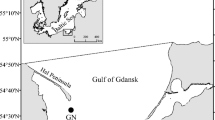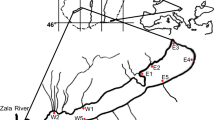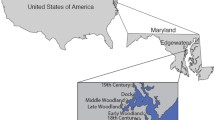Abstract
Dreissena polymorpha is an exotic freshwater bivalve species which was introduced into the Great Lakes system in the fall of 1985 through the release of ballast water from European freighters. Utilizing individual growth rings of the shells, the stable isotope distribution (δ18O and δ13C) was determined for the life history of selected samples which were collected from the western basin of Lake Erie. These bivalves deposit their shell in near equilibrium with the ambient water and thus reflect any annual variation of the system in the isotopic records held within their shells. Observed values for δ18O range from -6.64 to –9.46‰ with an average value of –7.69‰ PDB, while carbon values ranged from –0.80 to –4.67‰ with an average value of –1.76‰ PDB. Dreissena polymorpha shells incorporate metals into their shells during growth. Individual shell growth increments were analyzed for Pb, Fe, Mg, Mn, Cd, Cu, and V concentrations. The shells show increased uptake of certain metals during periods of isotopic enrichment which correspond with warmer water temperatures. Since metals are incorporated into the shells, the organism may be useful as a biomonitor of metal pollution within aquatic environments.
Similar content being viewed by others
Author information
Authors and Affiliations
Additional information
Received: 31 October 1996 · Accepted: 21 May 1997
Rights and permissions
About this article
Cite this article
Al-Aasm, I., Clarke, J. & Fryer, B. Stable isotopes and heavy metal distribution in Dreissena polymorpha (Zebra Mussels) from western basin of Lake Erie, Canada. Environmental Geology 33, 122–129 (1998). https://doi.org/10.1007/s002540050232
Issue Date:
DOI: https://doi.org/10.1007/s002540050232




